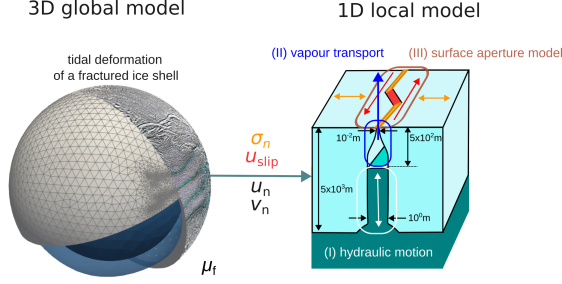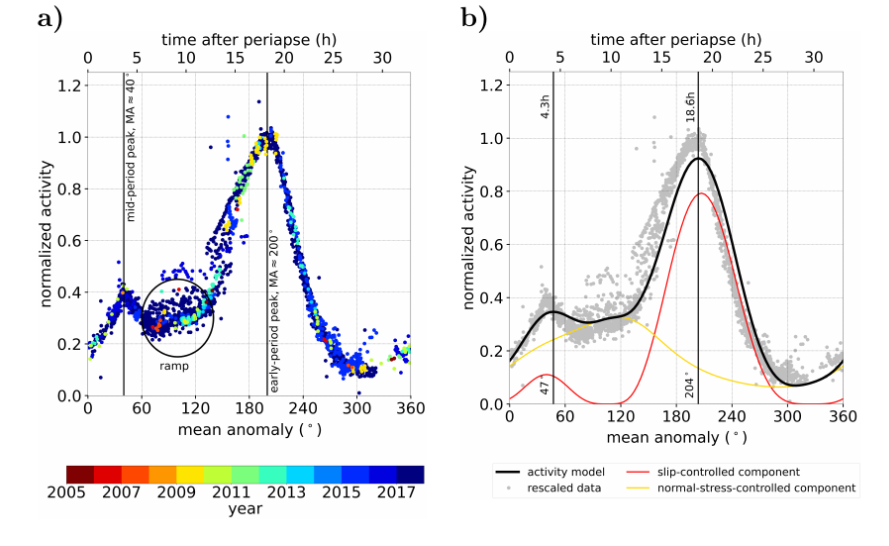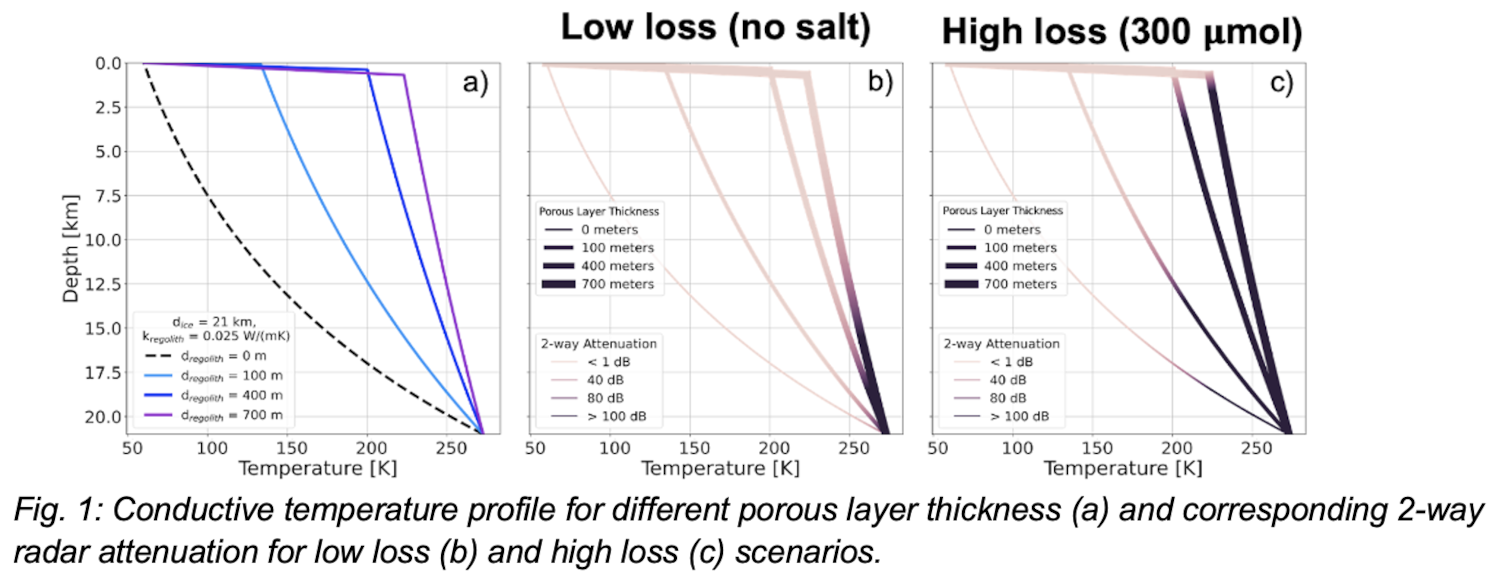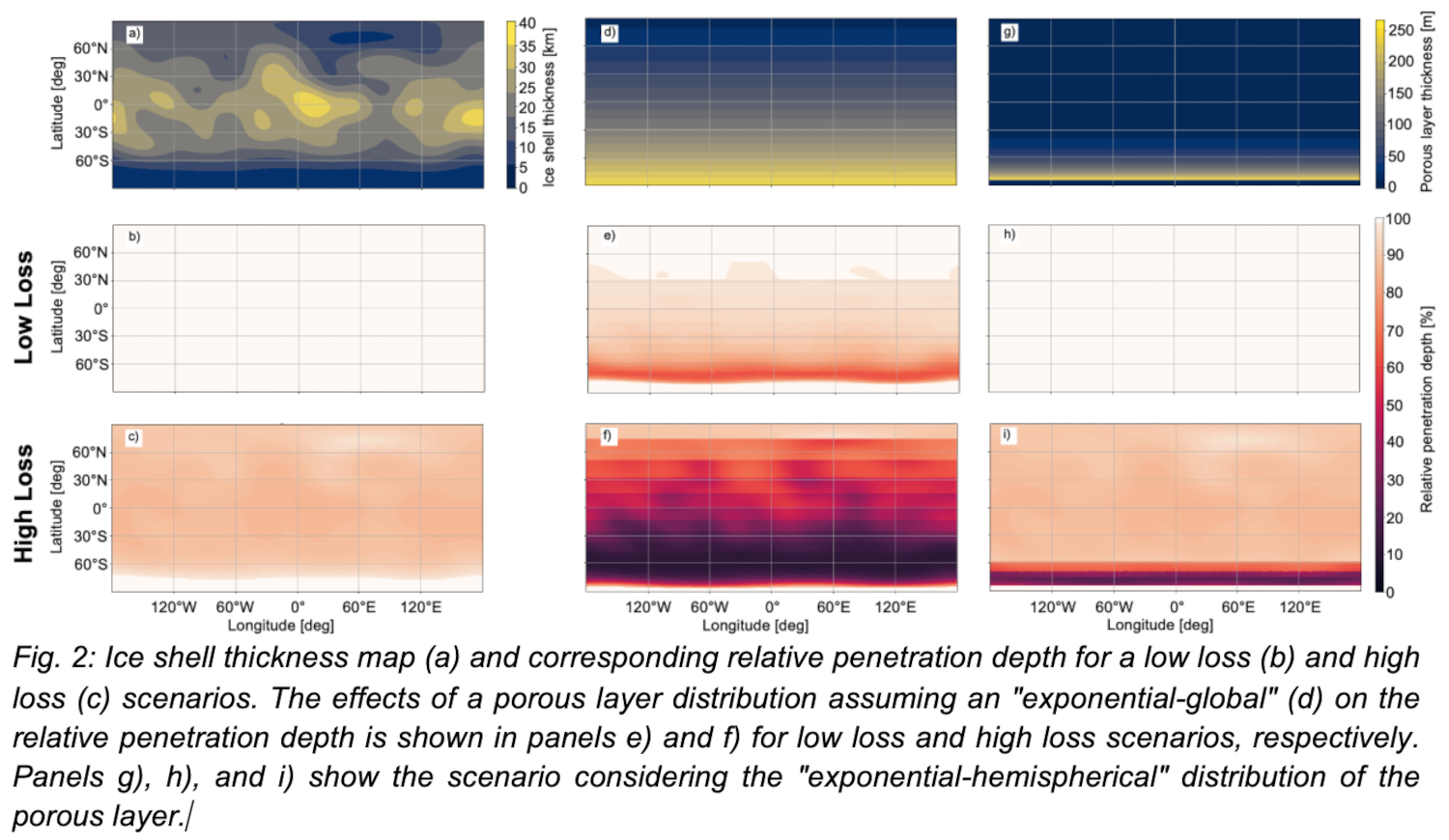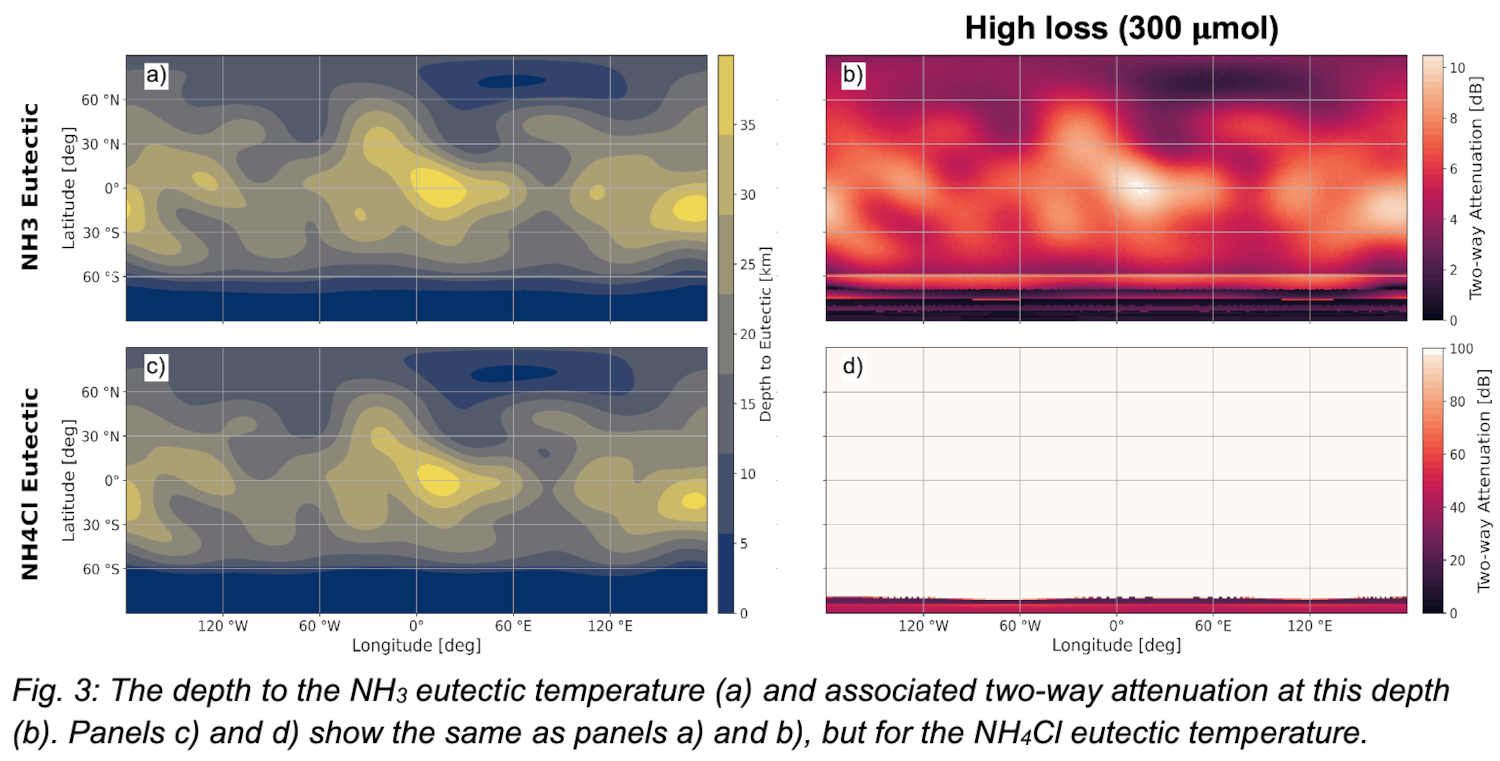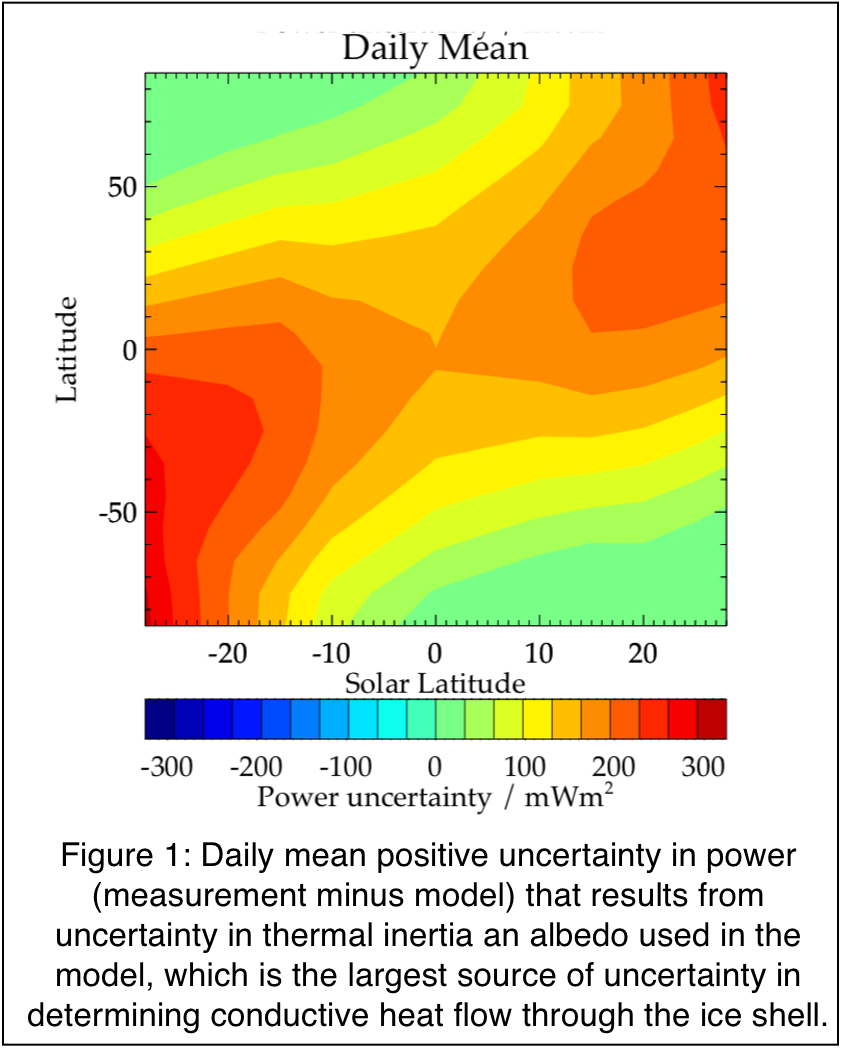Introduction
Ocean worlds of the Solar System have all the prerequisite ingredients for the emergence of life as we know it: organic compounds, liquid water and energy sources. Biosignatures and prebiotic compounds are organic molecules particularly searched for, such as amino acids, proteins, peptides or fatty acids. Several icy moons orbiting the giant planets are part of this ocean worlds’ family. Among them, the two saturnian moon Titan and Enceladus are of a primary interest and particularly targeted by the space agencies. Titan is the largest moon of Saturn and a unique environment in the Solar System. The dense atmosphere of Titan has been extensively studied by the Cassini-Huygens space mission and has revealed a world dominated by organic aerosols from the high atmosphere to the surface. Mass spectrometers on board the Cassini orbiter, INMS (Ion and Neutral Mass Spectrometer) and CAPS (Cassini Plasma Spectrometer), have detected positive ions and neutrals up to 100 u and heavy positive and negative ions of tens and even thousands of mass units [1]. Enceladus is a very small moon (with a diameter around 500 km) orbiting Saturn, inside the E-ring. Plumes have been detected at its south pole. The matter ejected by these plumes is composed by water ice and heavy organic compounds [2]. Both moons house a subsurface liquid water ocean and identifications of heavy organic compounds have been suggested [1-3]. On Titan, some liquid water bodies remain at the surface about a thousand years (in crater melt pools). New mission concepts and instruments are currently in development or in preparation for the future exploration of these ocean worlds.
A High Resolution Mass Spectrometer based on the OrbitrapTM technology
Future astrobiology space mission payloads should include High Resolution Mass Spectrometer (HRMS) instrument to provide unequivocal identifications of most biosignatures and prebiotic molecules. A new generation of high-resolution mass analyzer is currently developed by a consortium of six laboratories, led by the LPC2E (Orléans, France) and funded by CNES. This mass analyzer called CosmOrbitrap [4] is based on the OrbitrapTM technology, developed by Alexander Makarov [5] and commercialized by Thermo Fischer scientific since 2000s. Work was undertaken in collaboration with the University of Maryland and the Goddard Space Flight Center (GSFC) to develop a laser CosmOrbitrap-based mass spectrometer for future spaceflight applications. Among them, the CORALS (Characterization of Ocean Residues and Life Signatures) spaceflight prototype instrument recently achieved Technical Readiness Level (TRL) of 5+ [6]. This instrumentation challenges other MS and HRMS developments and promises unprecedented analytical performances in space. They have already been demonstrated in the lab on a large and various organic samples range: pure amino acids, short peptide biosignatures similar to those observed for instance in extremophiles on Earth, mixtures of organics with water or salts and complex organic matter analog to those found in the Titan atmosphere [7-11]. The laboratory test bench based on the same principle is coupling the mass analyzer CosmOrbitrap with a commercial Nd-YAG laser ionization system operating at 266 nm and has been fully described in [4,8]. This work aims at demonstrating the potential of laser CosmOrbitrap-based instruments for the future exploration of ocean worlds by the analysis of analogs and representative samples of Titan and Enceladus.
Representative samples of ocean worlds
In this work, three kinds of sample have been analyzed: (1) analogs of Titan’ aerosols produced in laboratory called tholins, (2) commercial tripeptides and (3) natural analogs representative of the Enceladus’ ocean.
Various laboratory experiments allow the synthesis of analogs of the so-called “tholins”. One of them, the PAMPRE experiment [12] uses a radio frequency reactive low-pressure plasma to produce solid particles and solid films onto metallic surfaces placed inside the PAMPRE reactor, mimicking the coupled ion-neutral chemistry occurring in Titan ionosphere [1,13]. Tholins studied are produced with a gas mixture of 5% of methane (CH4) and 95% of nitrogen (N2). Commercial tripeptides are combinations of leucine-glycine-glycine (LGG) and phenylalanine-glycine-glycine (PGG) dropped onto titanium and nickel plates. Natural analogs are coming from the hypersaline Mono lake (California, USA) used to be considered as an analog environment of the salted and subsurface ocean of Enceladus [14]. A comparative study is undertaken with results obtained on the same Mono lake samples with another technique coupling a separative method (capillary electrophoresis, CE) with a mass spectrometer [15].
Laser CosmOrbitrap mass spectrometer analyses
Latest results obtained with the laser CosmOrbitrap test bench using these various samples will be presented. Compound identifications, analytical performances and other techniques comparisons (like CE-MS) will be part of these results. They participate to a better understanding of these unique extraterrestrial environments but they also demonstrate the need of this specific, highly capable, instrumentation for the future space missions dedicated to the ocean worlds exploration.
Acknowledgments
We gratefully acknowledge the CosmOrbitrap consortium (LPC2E, LATMOS, LISA, IPAG, IJC Lab, J. Heyrovsky institute of Physical Chemistry), Alexander Makarov (Thermo Fisher Scientific) and the CNES for its technical and financial support.
We acknowledge the CORALS and AROMA teams, the NASA GSFC and the University of Maryland for a very fruitful collaboration.
We also acknowledge the LATMOS and PIIM teams for the production of the Titan’ aerosols analogs and Maria Mora from JPL for providing us some Mono Lake samples.
References
[1] Waite et al. 2007, Science, 316
[2] Postberg et al. 2018, Nature, 558
[3] Waite et al. 2009, Nature, 460
[4] Briois et al. 2016, Planetary and Space Science, 131
[5] Makarov 2000, Analytical Chemistry, 72
[6] Willhite et al. 2021, IEEE Aerospace conference
[7] Arevalo et al. 2018, Rapid Communications in Mass Spectrometry, 32
[8] Selliez et al. 2019, Planetary and Space Science, 170
[9] Selliez et al. 2020, Rapid Communications in Mass Spectrometry, 34
[10] Selliez et al. 2023, Planetary and Space Science, 225
[11] Ni et al., 2023, Astrobiology, 23
[12] Szopa et al. 2006, Planetary and Space Science 54
[13] Dubois et al. 2020, Icarus 338
[14] Preston and Dartnell 2014, International Journal of Astrobiology, 13
[15] Mora et al. 2022, Astrobiology, 22
